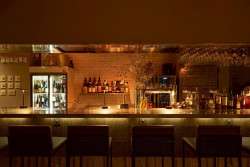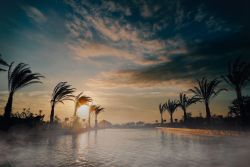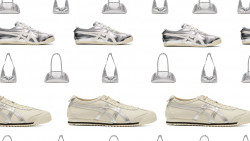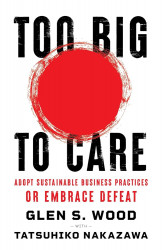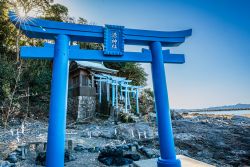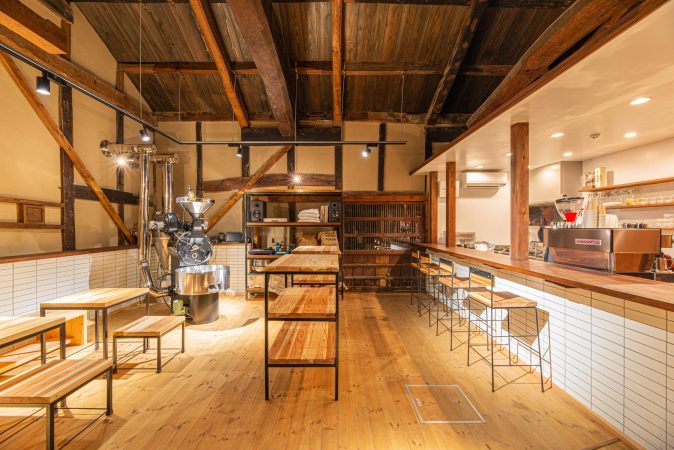
When Japan famously opened up to the world it was via Yokohama port at the end of the 19th century. But hundreds of years before that, Japan communicated with the world from the east via its port of Obama in the Wakasa area. This small Japanese town in Fukui Prefecture is well known in Japan as an important old port before the coincidental name-overlap with a U.S. president. It was, and still is, the main fish supplier for Kyoto’s kitchens. Obama’s fish sellers would salt the fish in Obama and send it to Kyoto. It’s said that it took about 24 hours on foot along the Saba Kaido (Mackerel Road) to reach the capital, by which time the fish would have reached perfect saltiness.
Today, this road can be partially hiked, or walked, or you can drive between some of the best-preserved spots along it. There’s plenty of fish to be sampled in Obama’s restaurants, but when it comes to crucial nourishment, every traveler needs coffee. And coffee in Japan has its own long story. Long story short — the first records of Japanese interacting with the Dutch were in the 17th century and show that they were initially not fond of the bitter black liquid that was introduced to them. However, that changed to such a degree that Japan is now the third-largest importer of coffee in the world.
Still, the farther you go from Tokyo’s cornucopia of all the cafes and restaurants you could ever wish for, the rarer coffeeshops become. But those few that can be found are usually worth it. They are always an obvious labor of love, an example of dedication and, more often than not, distinctive.
[rl_gallery id="190033"]
1. SOL’S COFFEE in Kumagawa-juku (Wakasa)
One of the first stops from Kyoto on the way to Obama, Kumagawa-juku was a shukuba machi (post town) that provided much needed rest and shelter for fish peddlers walking the Saba Kaido route. It even had border inspection because in old times travel between prefectures was strictly regulated. No one will be stopping you nowadays when entering the beautifully preserved historical town, a medley of private residences and shops. One of the old houses revamped into a third wave-style coffee shop is a happy sight for 21st century travelers in need of a caffeine boost. The whole shop is dressed in bright wood, its strong supporting beams unchanged, having successfully borne the weight of heavy snowfalls for decades. They roast the coffee in-house, brewing specialty espresso, machiato, latte and more, the likes of which would be a treat to find even in Tokyo, let alone a small sleepy town like Kumagawa-juku.
8am – 5pm, daily
Hishiya 30-6-1 Kumagawa , Wakasa-cho, Fukui, 919-1532
yao-kumagawa.com/stay/sols-coffee/
[rl_gallery id="190039"]
2. cocoro bakery and cafe (Obama City)
This delightful cafe fusing the best of France and Japan goes the extra mile in everything it does. Housed in a beautiful, old wooden house in Obamanishigumi (Traditional Architecture Preservation District), cocoro bakery serves piping hot pastries straight from its authentic kiln in the back. The baked goods are made with organic flour, leavened with homemade natural yeast, and baked in a stone kiln using local Obama wood. The utmost attention doesn’t stop there — their cafe au lait is an organic, original blend too. The second floor of this old machiya (traditional wooden townhouse) is a sit-down space, with cute, porthole-like windows and quirky, vintage decorative pieces. One of a few cafes inside repurposed, preserved houses in the heart of Obama, it merges convenience, familiarity, excellence and history.
9:30am – 5pm (closed Mon and Tue)
cocoro 39-2 Obamaotokoyama, Obama, Fukui 917-0052
ishigamapancocoro.com/
[rl_gallery id="190047"]
3. cafe WATOTO (Obama City)
Cafe WATOTO feels like visiting good old friends. The staff’s dogs greet you outside, their budgies chirp as you go in and the hosts say that they offer “imperfect comfort.” You can sip a drink at the kitchen bar, take a book from the shelf in the sunken hearth, play the guitar or lounge in the tatami rooms as you look out over the road and open space. They also have homemade lunch with select, healthy ingredients. Depending on the time, there is the occasional event, workshop or pop-up store — from cooking and sewing lessons to poetry readings, they have eclectic offerings. The solitary house with traditional Japanese elements is on the outskirts of Obama and on the way to one of the hiking points for the Saba Kaido. Taking a taxi or cycling to it is the most hassle-free way to get there.
11am – 6pm (closed Thur and Sun)
cafe watoto 9-14 Tadano, Obama, Fukui 917-0245
cafewatoto.web.fc2.com/index.html
facebook.com/cafe.watoto
[rl_gallery id="190053"]
4. Cafe Gallery Saika (Miyama, Kyoto area)
This tiny, picturesque village of thatched roofed houses rivals the more famous Shirakawago but is a relatively peaceful, uncrowded, undiscovered gem. Although most of these thatched roof cultural heritage houses are private, visiting the one that’s been converted into a cafe is a treat in itself. Cafe Gallery Saika serves coffee, tea and sweets in its open-plan, traditional tatami floor space, veranda and front yard. Its handmade sweets proudly use organic, free-range Miyama milk and eggs, the difference being evident in the rich flavors. The “Gallery” in the name is not an accident — the cafe hosts art exhibitions from pottery to watercolor paintings and poetry books.
11am – 5pm (L.O. 4:30pm)
Cafe Gallery Saika 15 Kitashimomaki Miyamacho, Nantan-shi, Kyoto, 601-0712
Open daily (Only open on Wed, Sat, Sun and public holidays during the winter season)
https://miyamanavi.com/eat/saika

